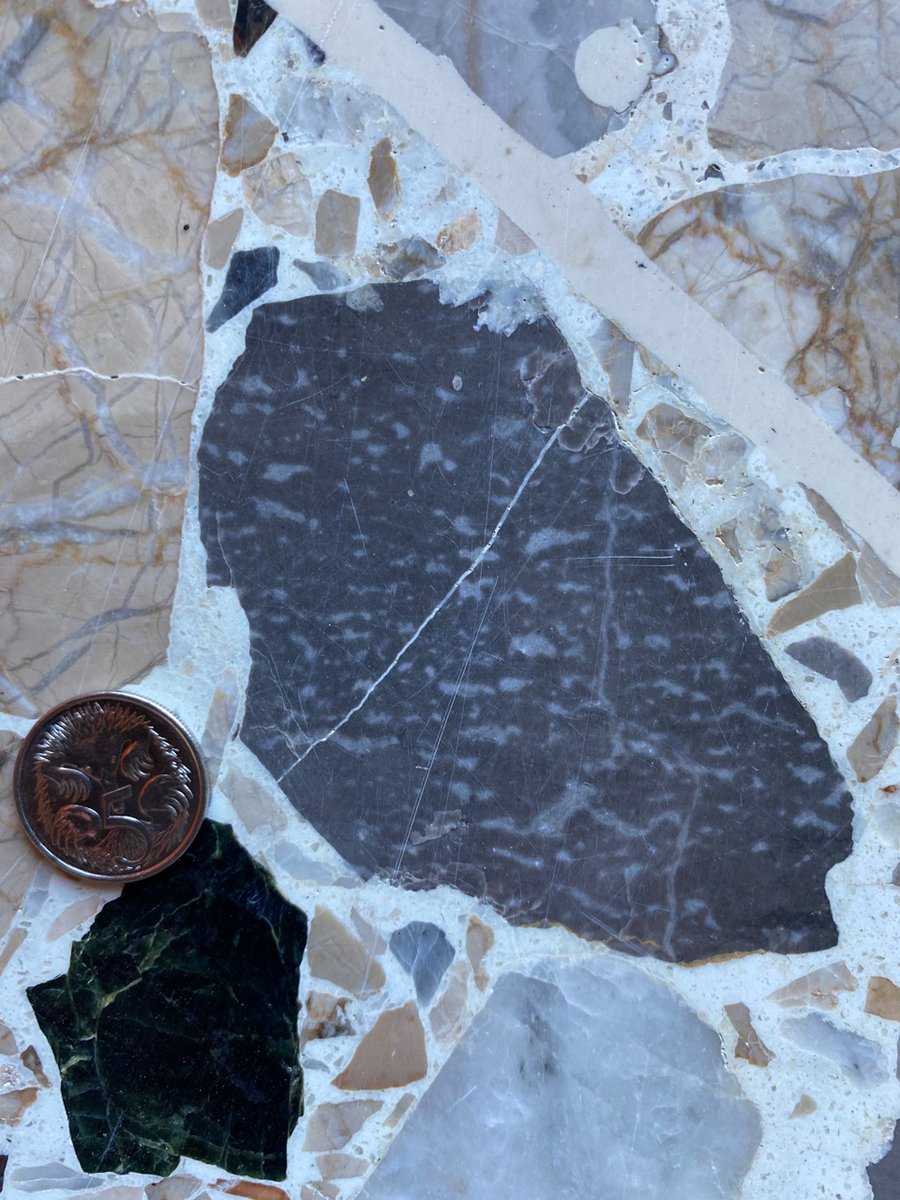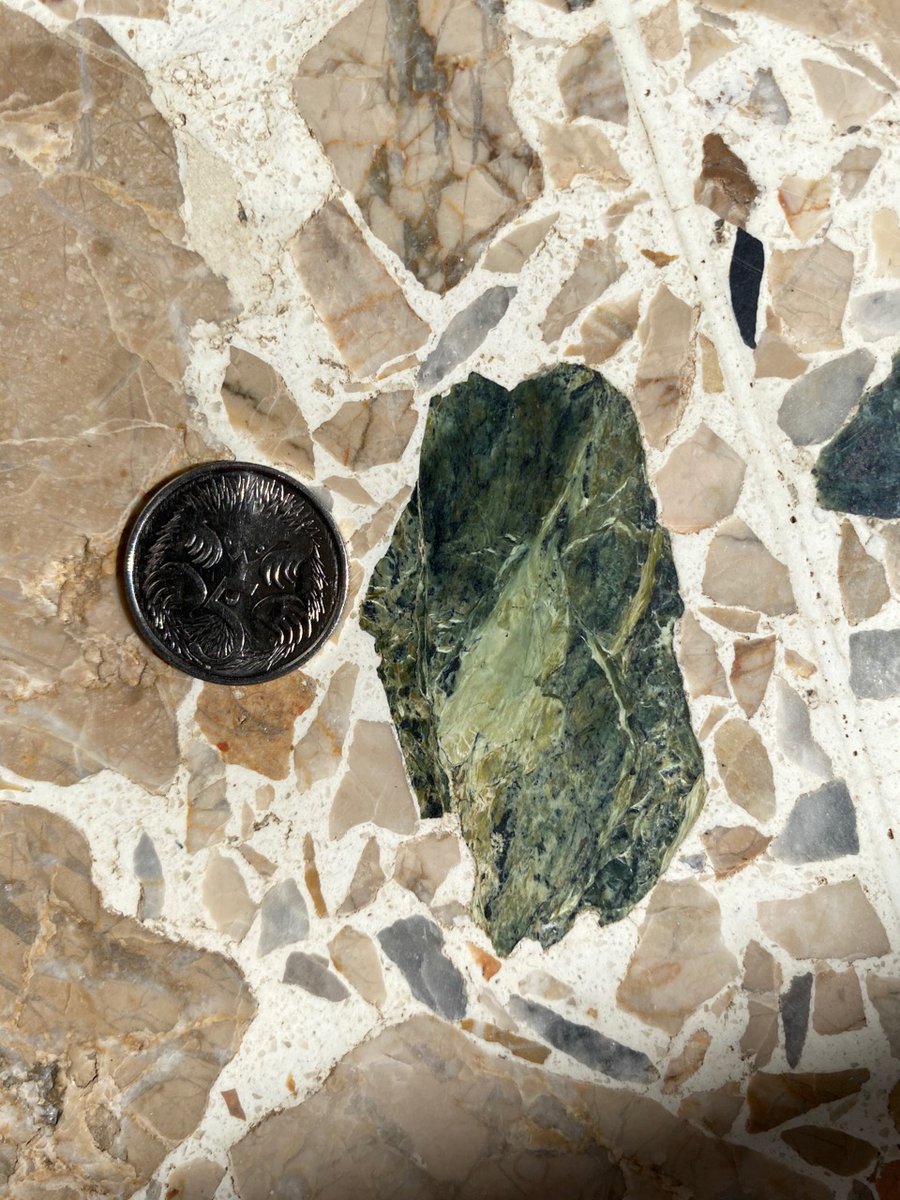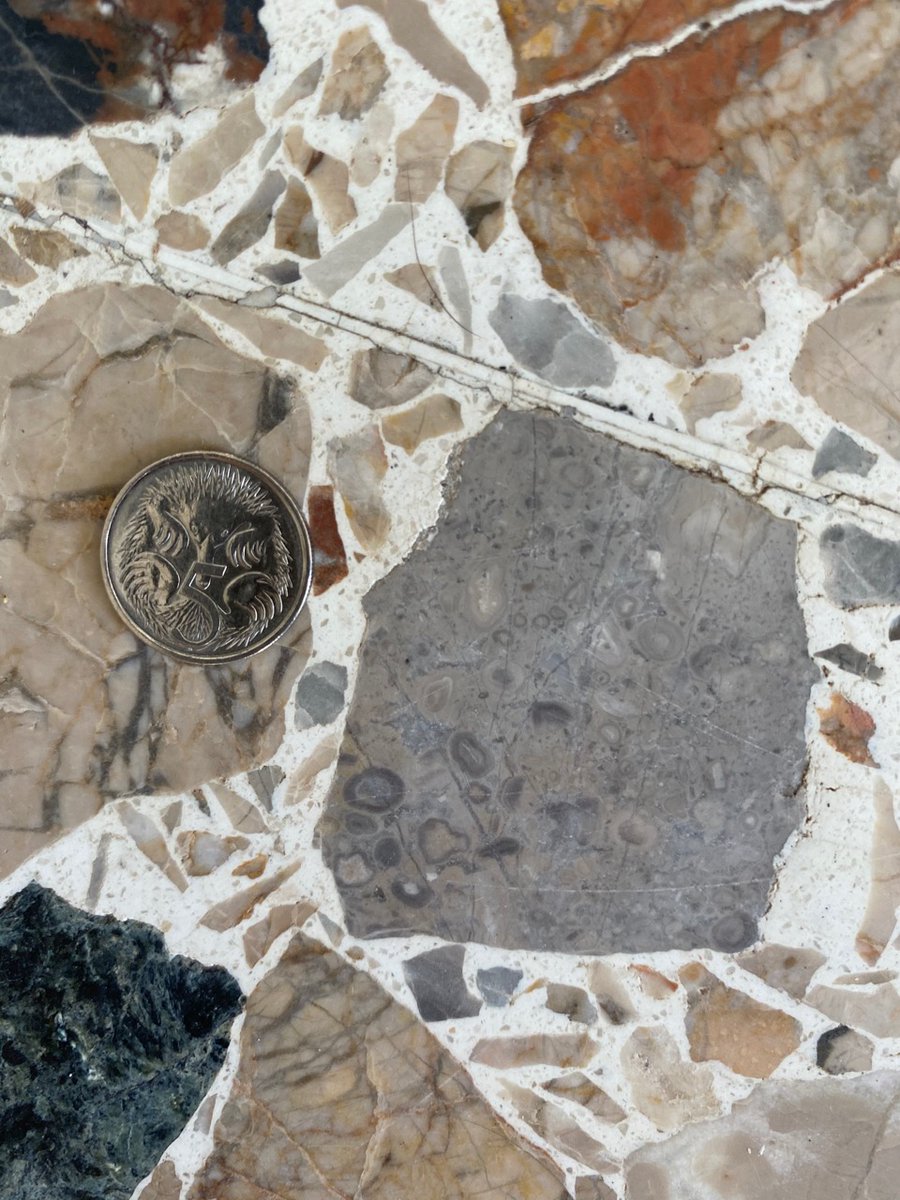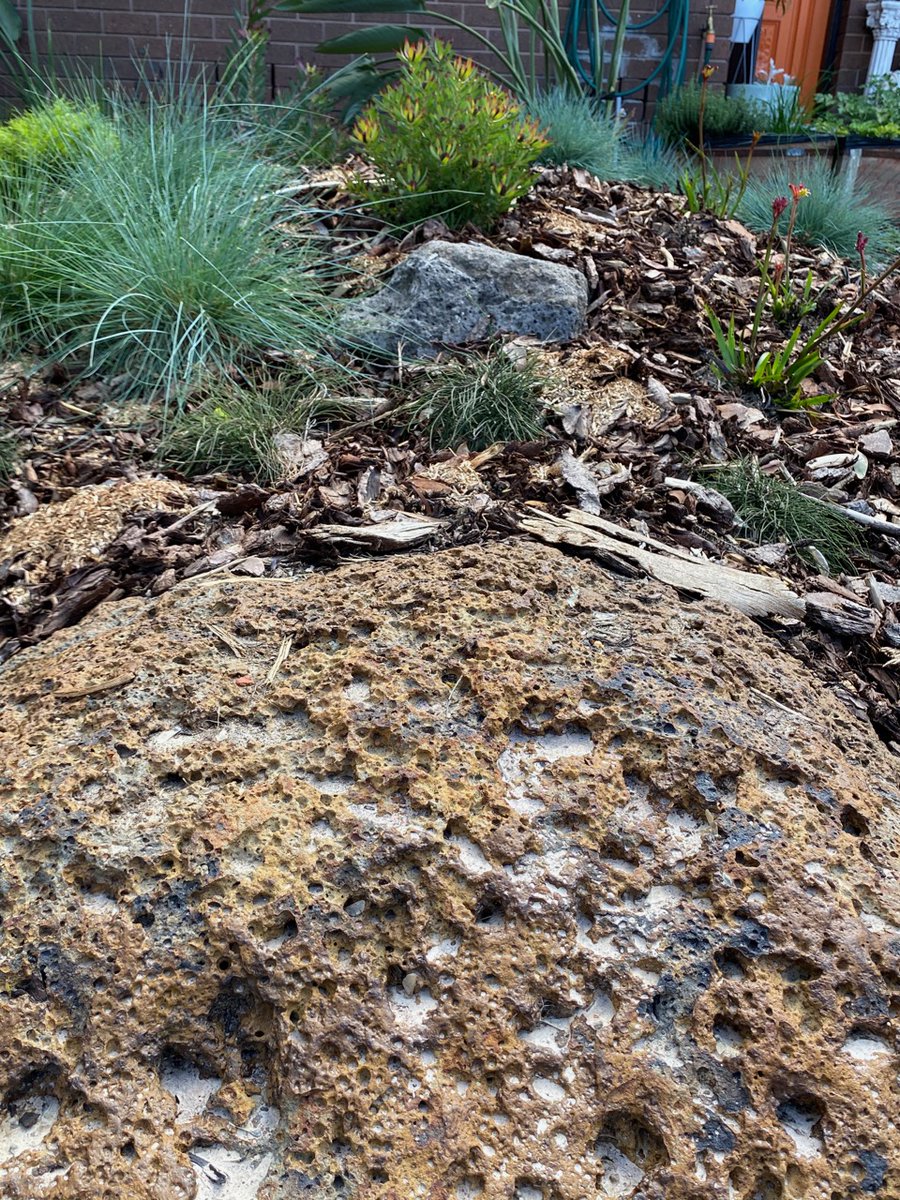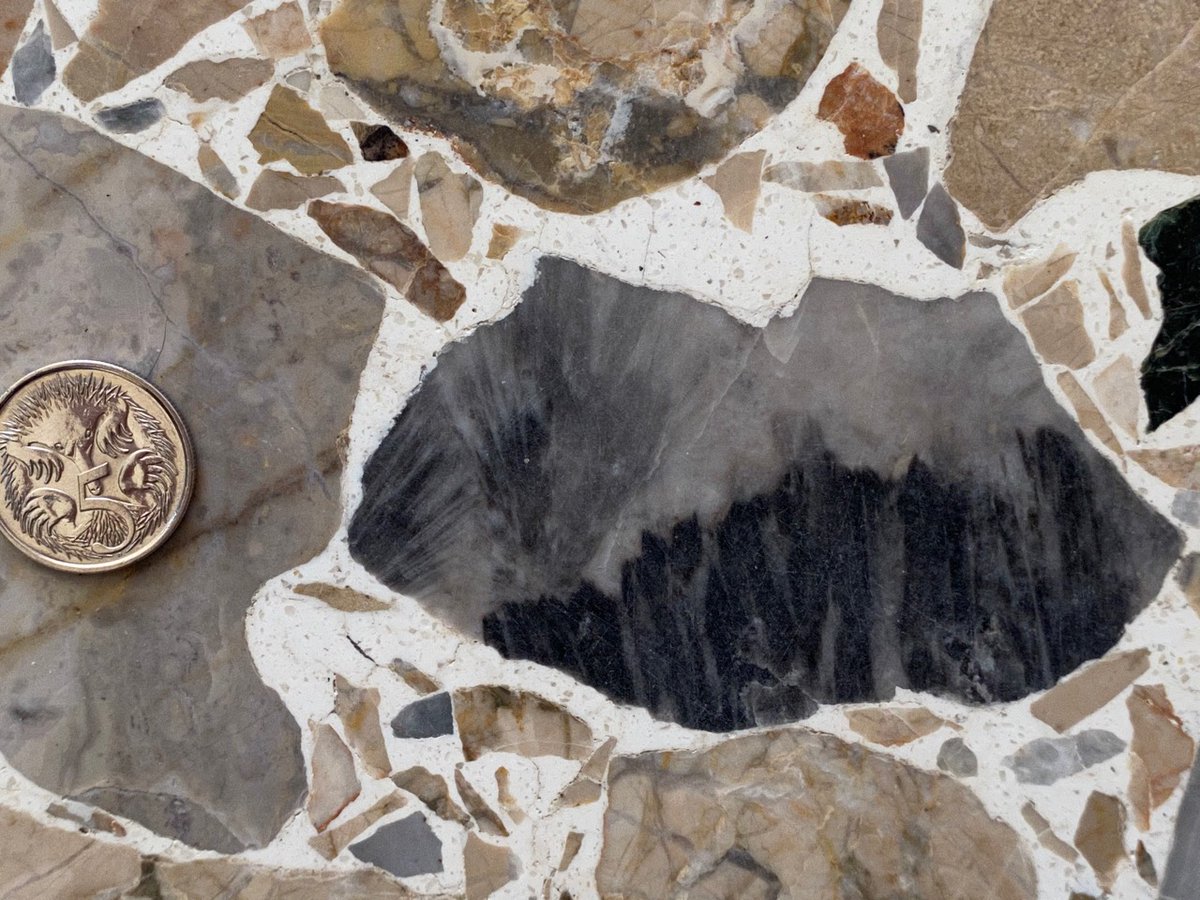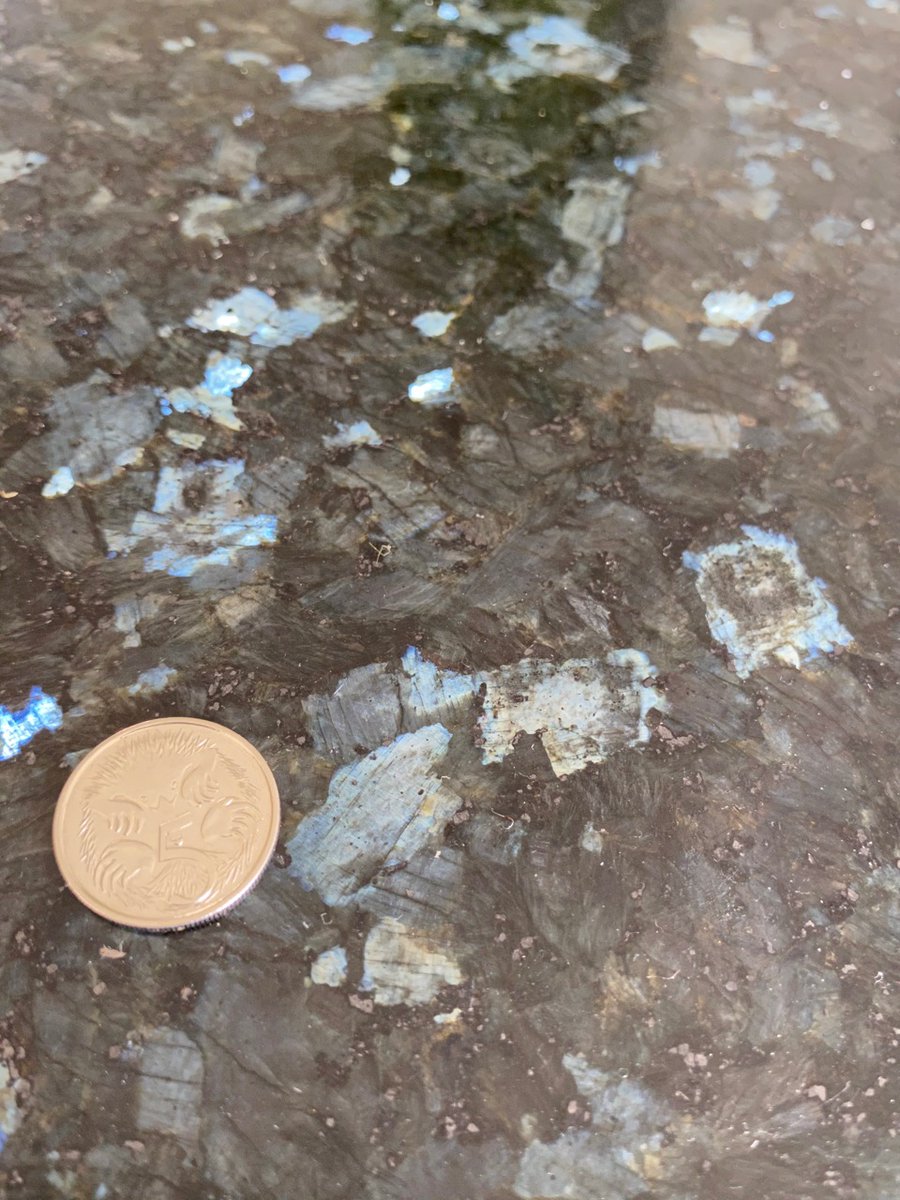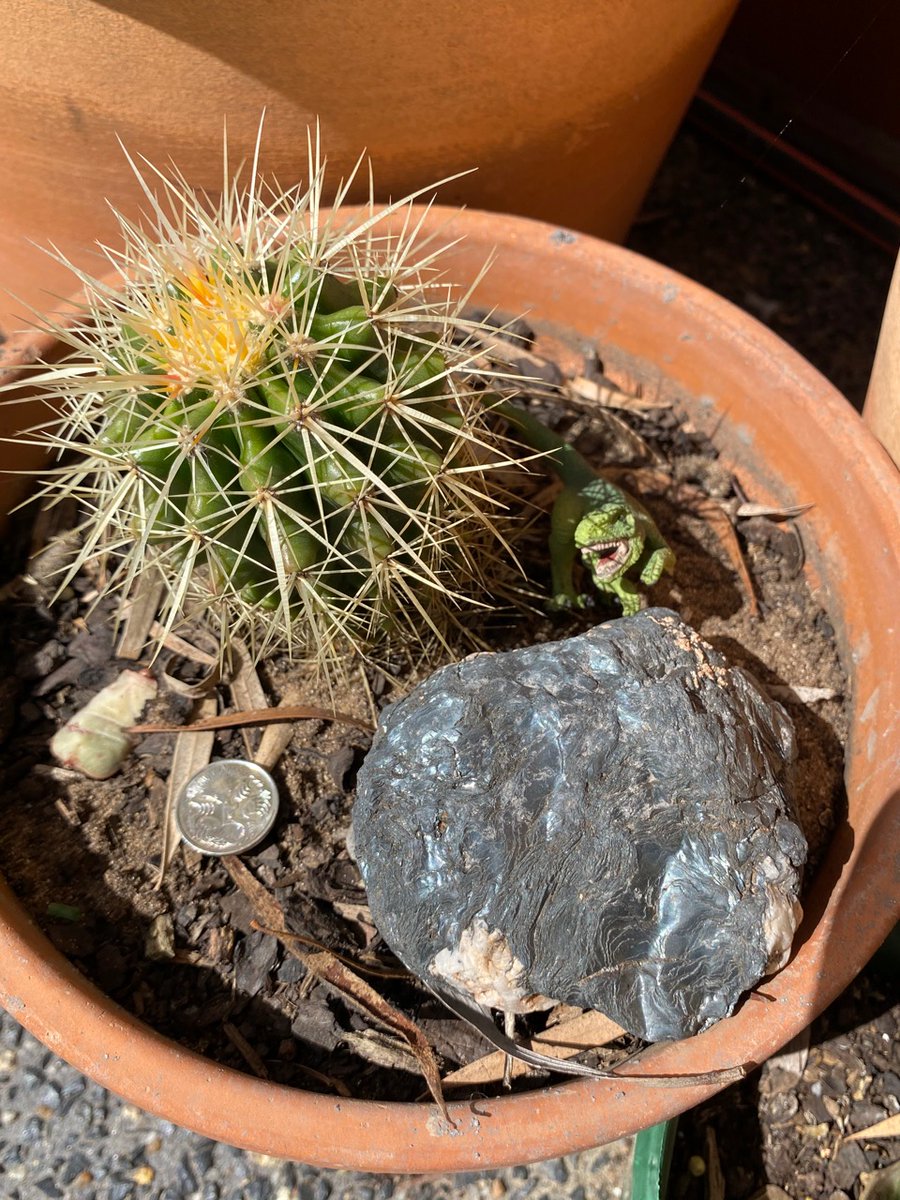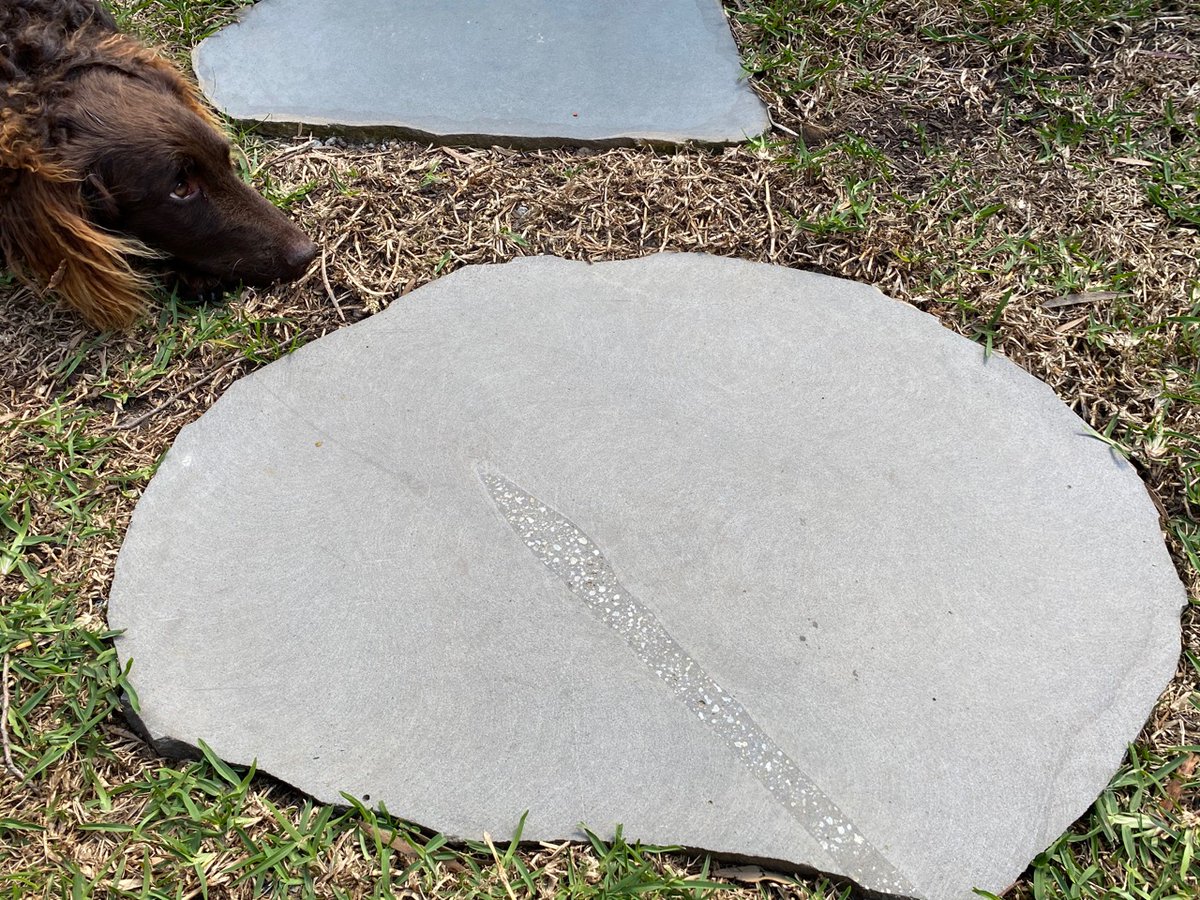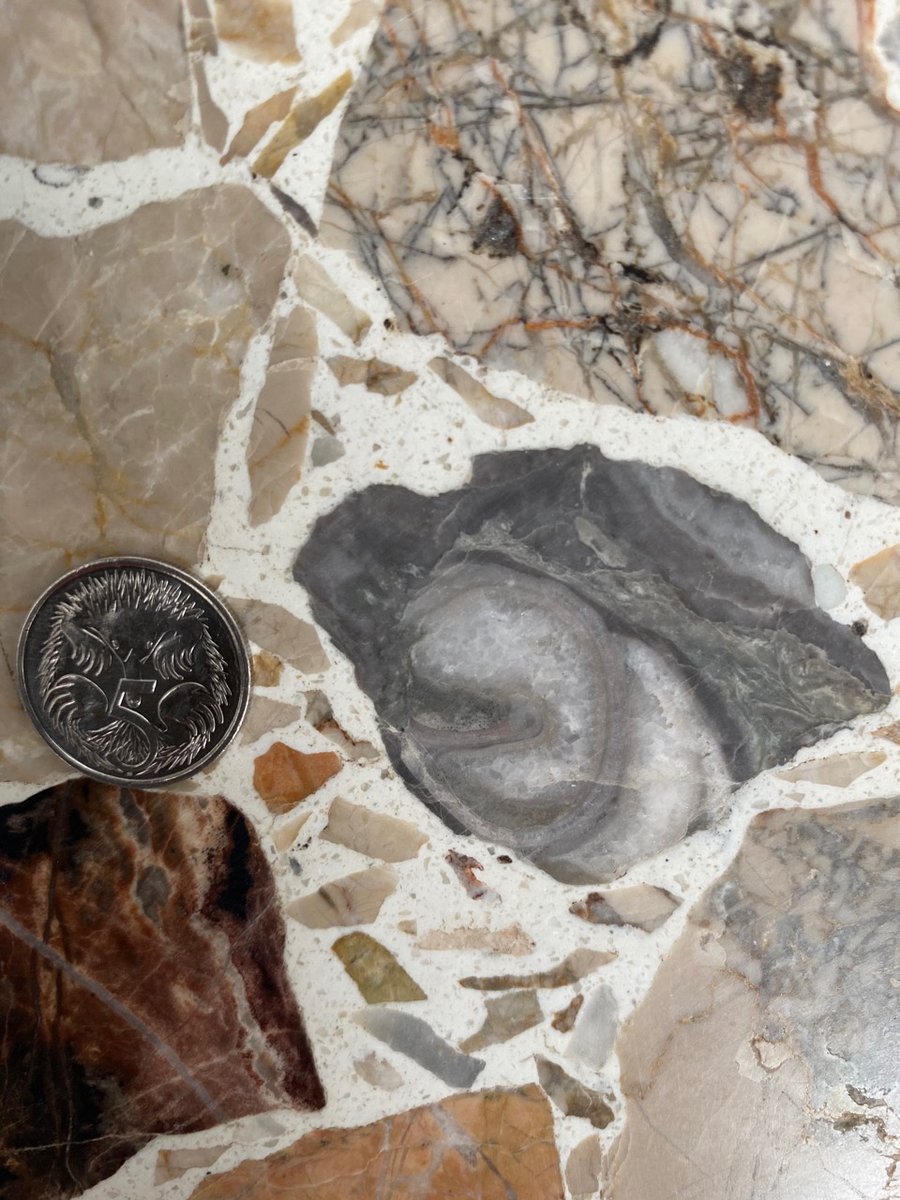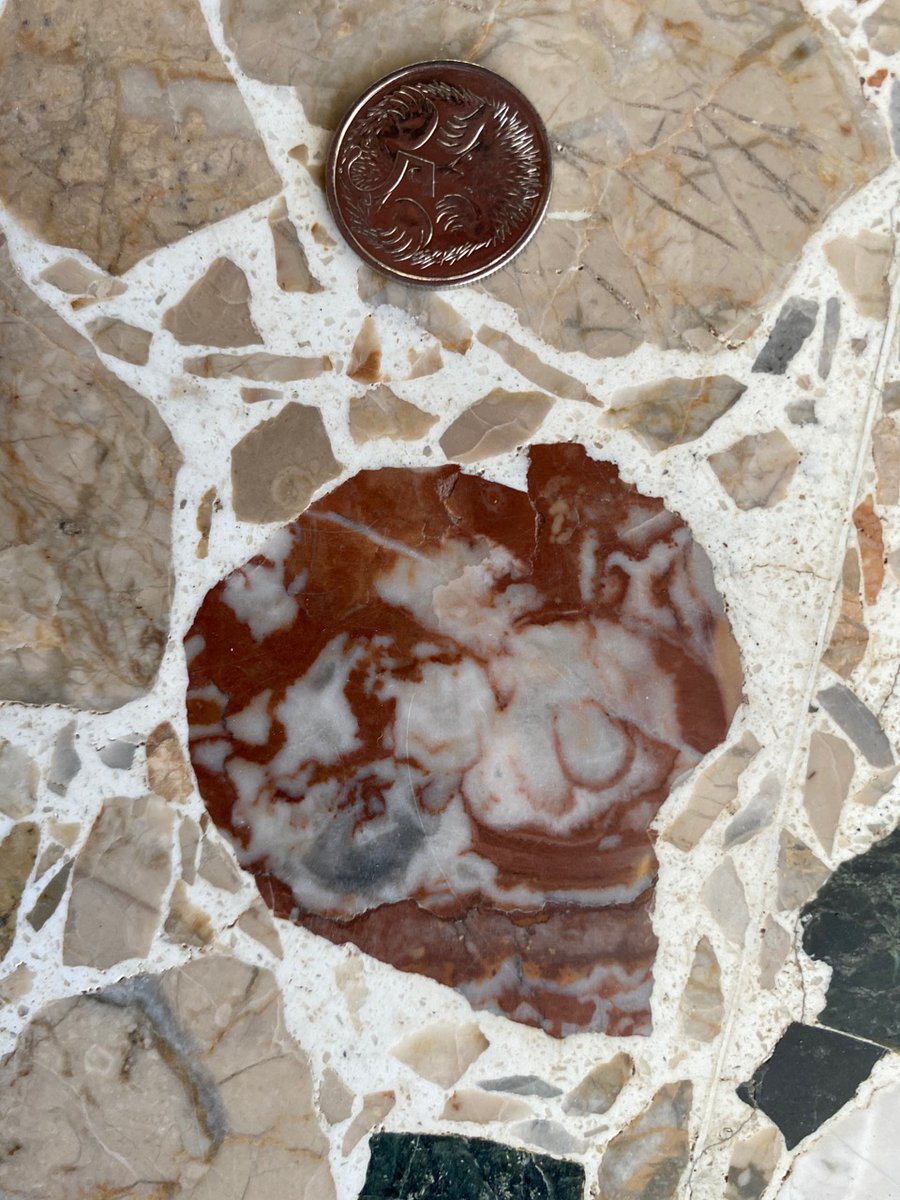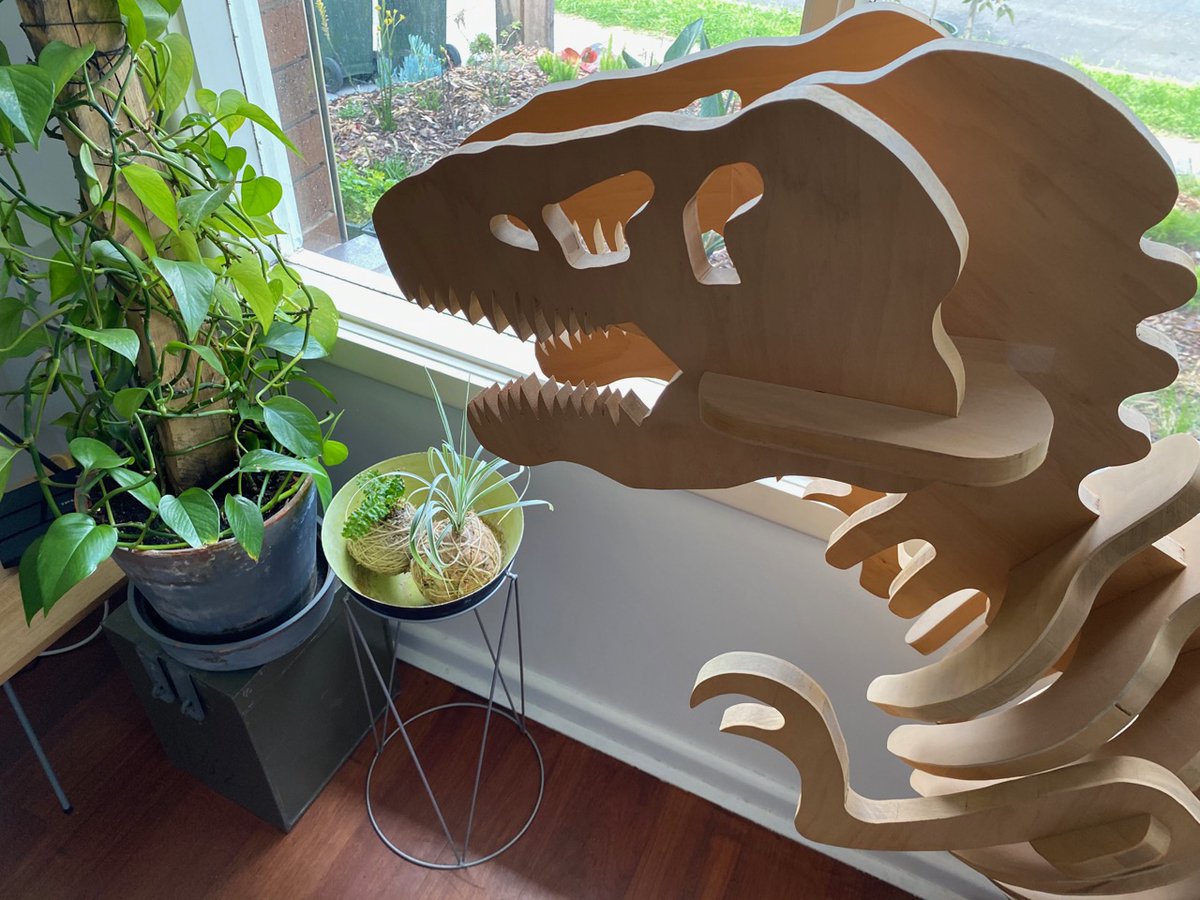After six cancelled field tips this year (and counting) may I present the closest thing to fieldwork I can still do, “The 2020 Lockdown Field Guide to the Geology Of My House: A Thread”. Frontispiece: Barry on our Terrazzo floor. #australianseds et al
Fenestrae! Limestone with little bubbles (windows), formed from wetting and drying and/or mucky gassy microbes. Classic old tidal flats.
Serpentinite. I think. Slippery snake-like, green rock, same hardness as limestone. Likely formed from a bit of heat and water messing up a mafic rock (e.g. ocean floor). Quite a nice result. Serpentine group minerals include lizardite (great name) and chrysotile (white asbestos)
Oncoid ooid grainstone. These beautiful coated grains likely formed in some shallow or intertidal ancient seawater environment. They might have been a bit slimy, washing around in the waves, covered in microbes. Please take me to find more in the Bahamas or Bermuda.
Big old basalt boulder found 1m deep in our front garden, smothered in the stickiest Merri Creek clay. The lava flow came from volcano just north of Melbourne, only about 2 million years ago- Newer Volcanics Provence. New Ar/Ar dates from Micheal Heath, @ChronoMatchan et al.
Maybe I’m too far gone into the Precambrian, but these look so much like former aragonite crystal fans? Permian limestone maybe? Any other ideas?
Marble threshold, barry for scale. Both barry and marble like a bit of heat, though Barry is obviously under no pressure.
Labradorite kitchen bench top. These weird blue-ish feldspar crystals refract light in a process nicknamed “labradorescence”. It results from slow cooling forming exsolution lamellae. Very 90’s. The little opaque minerals might be magnetite.
River cobble made of specular hematite from the Flinders Ranges. Some diaper-related muck, but very shiny! Dinosaur for scale.
Limestone breccia (kinda like the terrazzo itself!) with two different fracture generations. No thanks, please stop ruining my lovely limestone.
Limestone with clast filled with white calcite spar. Is this a gastropod? (Showing now I’m not a palentologist). This is called a geopetal indicator as we can use the flat top of the sediment inside it to tell which way is up (top of the image).
Red limestone. Love a bit of hematite in my limestone. I want this to be from the Devonian. Is there life hiding in there? A former sponge?

 Read on Twitter
Read on Twitter
